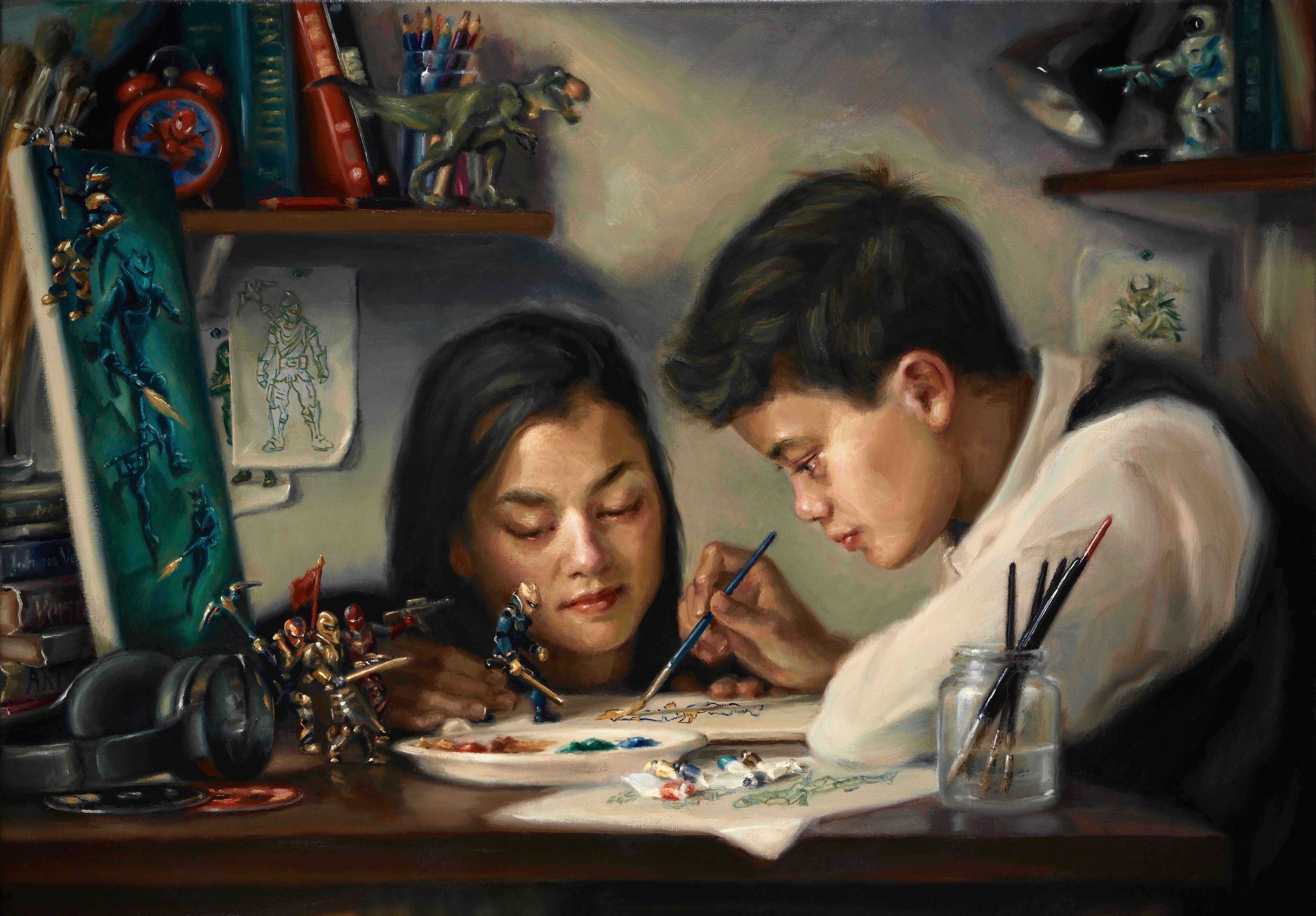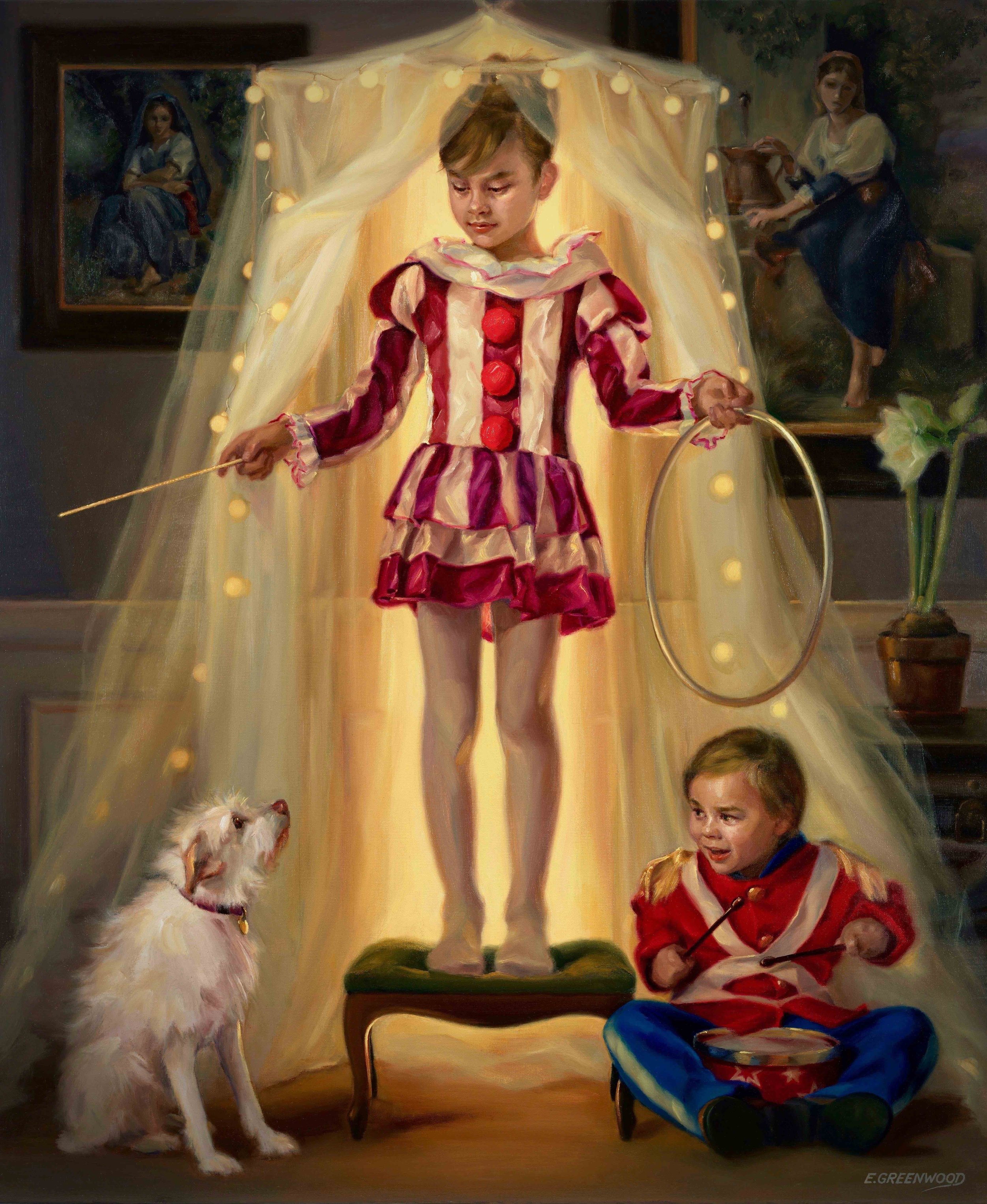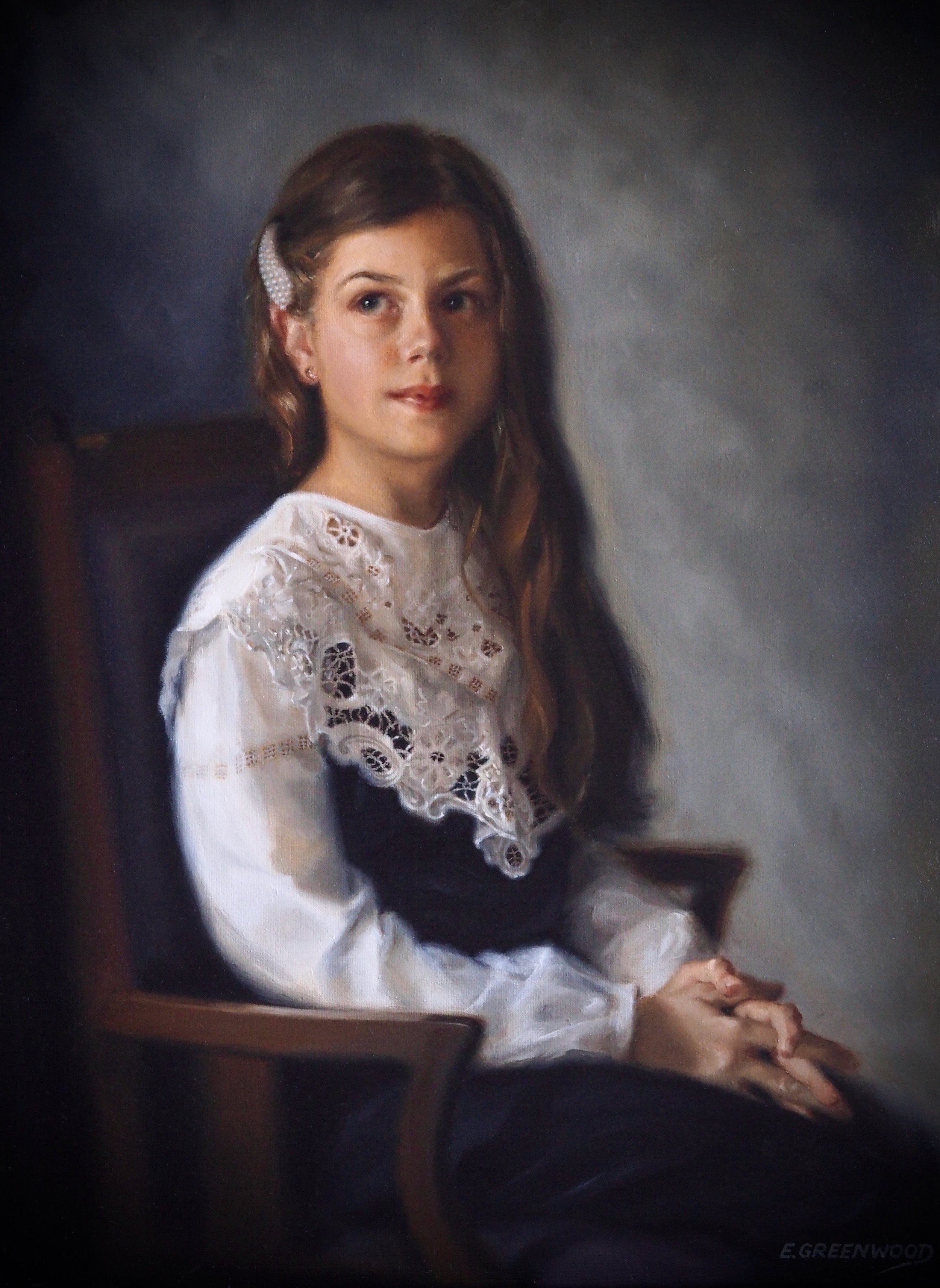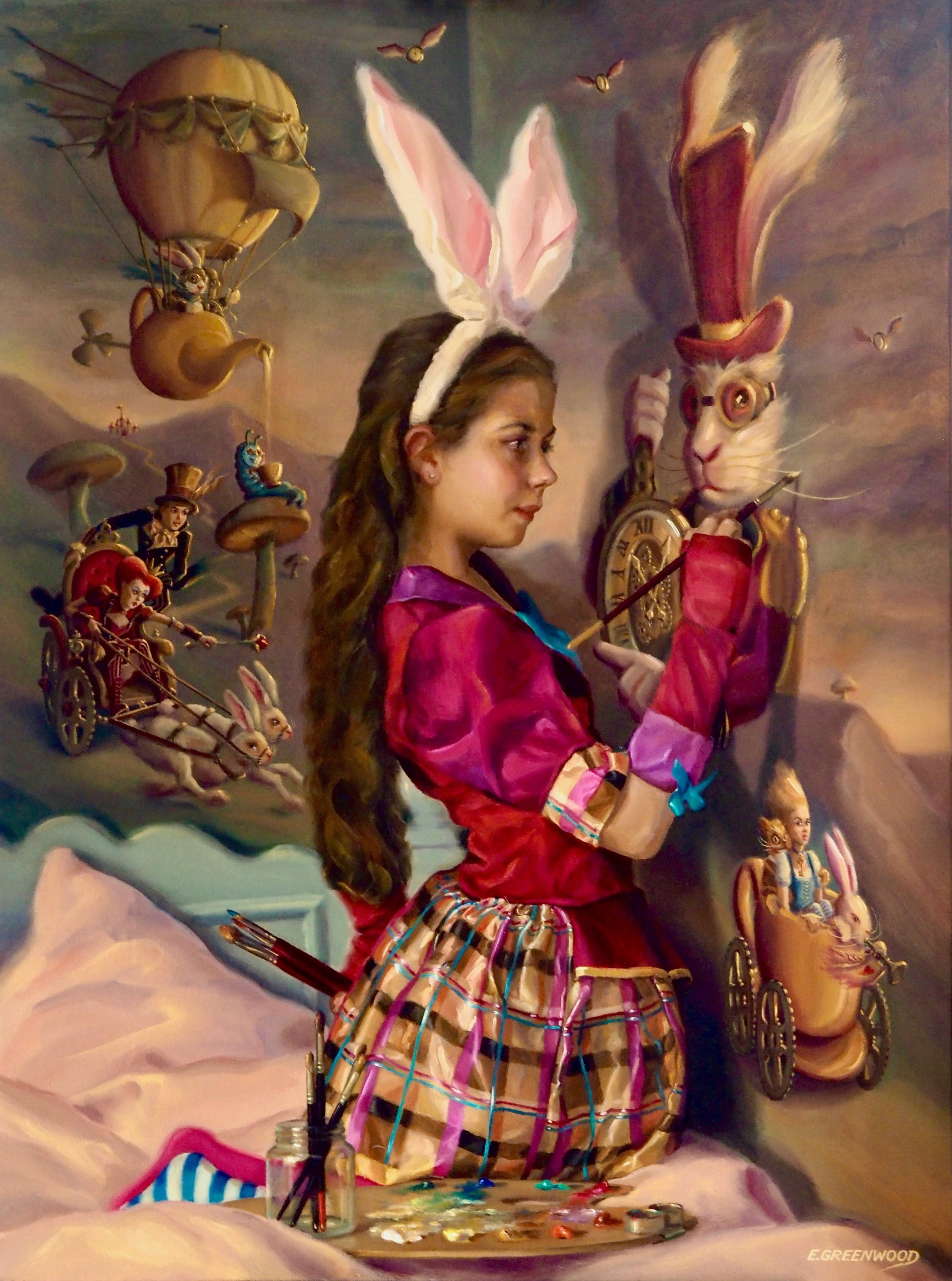ARTIST INTERVIEW: Eddy Greenwood
Tell me about yourself. What ignited the spark to become an artist?
When I was a child I loved to draw, so it started at an early age. During my school years I knew I would pursue a creative profession. I studied at Canterbury College of Art, where I graduated with a BA Hons degree in Graphic Design and History of Art. After that, I joined an advertising agency in London, starting as an art director and later became a creative director working on international brands around the world. In 2006, one of my documentaries received the TED prize for the best best brand storytelling in film. After growing in that profession, you end up in management roles, and leading teams, which isn’t really what I love doing. Wanting to develop further, I turned my attention to the world of fine art and took the step to becoming a full time painter.
You’re a figurative artist. What fascinates you about the human figure? Is there any specific features that you enjoy painting?
As an artist, I find the most interesting aspect of the human figure are its irregularities and imperfections. Nobody has two eyes that are exactly the same. Nobody has two legs exactly the same length. So, if one leg is fractionally shorter than the other, the pelvis is not perfectly horizontal, which means the spine will have a slight compensation, resulting in shoulders that are not perfectly level, causing a small bend in the neck! Thats what makes us human and fascinating to paint. Of the features, I most enjoy painting the nose. I spend a lot of time getting it right, because its the biggest feature on the face. In the good ateliers, you are taught to follow the principle of the Van Dyck “Z” Anthony van Dyck began his portraits by establishing 3 lines - the eyebrow, the length of the nose, and the underside of the nose. That makes a “Z” and ultimately defines the tilt, angle and direction of the head.
You trained in Florence. How did studying in Florence influence your work?
I wish I could have studied full-time in Florence, but due to work commitments, I followed workshops there. So the training was condensed, but it had a profound effect on my approach to painting. What I learnt there, I still put into practice everyday in my studio. To begin with, the importance of mastering the values. Without that, you can’t tell the story. So I begin my painting projects with a grisaille (underpainting) painted on the canvas in raw umber. If it’s a complicated figurative piece, I will sometimes work on that for 3 weeks. When I am convinced I have resolved all the issues, I start to add colour. My approach to colour is the same - mix colours that match the values. In Florence, we only painted with natural daylight, I am so lucky that my studio in the Netherlands has a north facing window! For portraits, if the model is sitting or standing, I work sight - size, with some help from a mirror. If it’s a more complicated composition, with lying or reclining figures, I work under life size and get the drawing right using relative measurements.
What I also learnt in Florence was the importance of harmony of image. Being able to stand back and capture the core characteristics of the model, instead of getting lost in all the details. In the beginning I found this very difficult to understand. I had been trained as a graphic designer/illustrator where you are expected to draw everything you see because you are conveying information. Now I had to do the opposite, think like an editor and see what you can leave out to make the portrait into a stronger harmonised image. Artists like Frances Bell, and Isabella Watling are excellent at doing this.
How does painting from life help you to capture the perfect composition to reflect an INDIVIDUAL'S personality? Do you communicate a lot with your sitters?
When I start a project or a commission, I first have a meeting with the model in the studio. We talk, drink coffee, get to know each other. It’s a relaxed moment, but I am actually working. I study their facial movements, how they tilt their head as they respond to a question. Are they shy, or extravert? What’s their body language? How do they use their hands during the conversation? This is “quality time” with the model, where I can throw all my pre-planned ideas about the painting into the trash. I want the person sitting in front of me to be the spark that ignites the creative process. People are usually enthusiastic to discuss the clothes they want to wear for the portrait. I first want to learn more about their life story. What are their passions? What do they do when they are not working? From this conversation, I try to imagine what could be hanging in their wardrobe, that could really express their individuality. In the second meeting, they arrive at the studio with a suitcase full of ideas and we have a lot of fun trying them out. I have a selection of chairs, rugs and drapes to support the concept. It’s a great way to work, people always bring something special that you never could have imagined. Now I am ready to start the painting!
Thinking about your most recent painting, what was your creative process? How did you execute the piece?
My most recent painting is called “Home Circus”; still wet on easel, and a good reflection of where I am after my first 7 years of painting. Like most artists, when I began painting, all my attention went into capturing a good likeness of whoever was sitting in front of me. I was concentrating on following the academic process and structural disciplines that I had studied in Florence. That delivered good work, my confidence grew, and I felt that I had the necessary techniques and painting skills under the belt. It also lead to some restlessness, and I was left with the thought that I was missing something and wanted to make a personal statement with my work. In the last 2 years, I have been developing a more narrative approach to figurative painting projects. I now look for a theme or a story before I start to paint.
“Home Circus” came out of an exploration of what’s makes us creative. Where does it start? As an artist, I can be inspired by what I see around me, or a piece of music, or a great book, and that can lead to a painting. With children it’s different. Their creativity begins in another place; curiosity. Curiosity and the desire to explore the world drive children to use their imagination and problem solving skills in innovative ways as they wonder what something does, how something works, or what something would be like. As adults all we have to do, is give them the room. With this thought in my head, I began to design the scene. I liked the idea of a circus in the home and thought about how children would improvise to make it happen with very few resources. So the family pet replaces the lion, the hulahoop becomes the ring, little bro is the drummer boy and his sister takes the role of circus master. The circus marquee is created out of a mosquito tent from the camping trip, and adorned with lights from the Christmas tree.
A girl and her younger brother I knew, thought it sounded like fun, and offered to model for me. So once I knew the size of the children I could start to build a study sketch. This was also the moment that I needed to resolve the styling. I love the 19th century paintings from Antonio Mancini, featuring children from an Italian circus. So the brief to the mother was clear - retro outfits.
The concept for the lighting took me out of my usual comfort zone. The children took their positions under the north light window in my studio. However, I wanted to make use of the secondary light source from the Christmas tree lights which created the glow around the girl. This lead to another challenge that the girl was silhouetted by the backlight. Balancing the two light sources would be essential for the success of the painting.
I like to keep my paintings as real as possible, so I built the scene in my studio, and that’s where it stayed for 10 weeks. The children visited a few times, the dog made one appearance. I placed the circus clothing on mannequins, so I could take my time getting them right. I needed photo reference to paint the hands, they are always a challenge. However, the most problematic part was something I never expected - the two paintings on the wall. I had to re-paint them three times. Whatever I put in the frames, Mom, Dad, the family dog, it all looked cheesy. In the end the French Romantics saved the day!
Out of all your paintbrushes which is your favourite and why? Do you have a certain colour of paint that you love using?
I am using Rosemary Filbert hogs made from Chungking bristle. (Series 2045). I like them because the are made from a natural hair and they are quite stiff. When you drag a brush over the canvas, it needs to offer some resistance, and have a springy feeling when you flick the brush at the end of the stroke. As I am painting lifesize, most of my canvases are quite big; around 120x100cm. So, I make a lot of use of the bigger brushes. My favourite size is number 6, and if you load it with paint you get a nice chunky feeling to the brushwork. It’s also great for some facial features, and hands, because it stops you getting too detailed. I can now paint an ear with five brush strokes!
As I am painting up to 6 hours a day, the filberts do wear down. The good news is that the old ones make excellent brushes for painting fur, so recycle them for your animal portraits.
My favourite colour at the moment is Naples Yellow. There is a light and deep version available. The deep one gives you more chroma than a Yellow Ochre. I use it a lot in situations with a secondary light source like candles, or reflected light on a face if you are painting outside. The light version is great for doing highlights in a setting with warm light. It’s also an excellent mixing colour instead of using white.
What is the best advice you have been given as an artist?
“Paint what you love, and others will love it too.”
This has helped me a lot, especially in the development of my own style. When your heart stays in charge it will show in the painting. We are surrounded by distractions, especially Instagram. Everyday I can see paintings from artists all around the world, and it is so easy to think “Oh, I should be doing that sort of work” or the local gallery who tell you Still Life, and Landscapes sell much better than your portraits. Then there’s the glamorous International Art Prize competition that rejects you because you are not “Contemporary” enough. It’s not difficult to be confused! You just need to be strong and paint what fills you with passion. For me, its figurative art. Time just flies when I am working on a canvas.
Who is your favourite artist? If they were sat next to you right now, what would you ask them? Do they have an influence on your work?
John Singer Sargent. My choice for JSS is not just because I love his paintings. I am teaching nearly everyday of the week, and often the difficult explanation of a technique, or the use of a colour or brushstroke, can be easily understood when I take an example from JSS. His approach to painting had a structure and consistency through so many years, that makes it easy to break down, understand the different stages and follow the process. It’s no surprise that he’s the students favourite in ateliers around the world.
If I could be transported back in time, I would love to have a conversation with him about how he worked with his models to create such natural and relaxed poses. Especially how he made use of their hands to add an extra layer of emotion. It all looks so easy, until you have a model in front of you, and you have to do it yourself.
His influence on my work? I find the strongest aspect of his work was the use of fewer, but well chosen brush strokes to capture a feature on the face, or a fold in the clothing. An incredible talent! I am still developing, trying to find my own way of doing this. It’s very hit and miss, you either get something surprisingly good, or it’s a total disaster!
Why do you think art is important in society?
For me it’s about creating something out of yourself. These days we can buy just about anything we want, and have it delivered within 24 hours. With that comes a short period of joy and when that wears off we make the next purchase. It’s incredibly rewarding when you can create something from your own hands, or brain, or voice, or body. Whether you create a piece of art, dance, sing or write poetry, it’s an enriching experience for the soul. Also it’s something everybody can feel, at all different levels. I am a professional painter, but also join in with the activities of the local village art club. They are busy people with families, who have a lot more commitments than I do, but still feel a great sense of achievement when they hang their work for the summer show.












